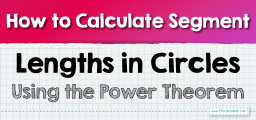Vector-Valued Functions: Fundamentals and Applications
Vector-valued functions map real numbers to vectors, representing curves and motions in multidimensional space. Essential in calculus, physics, and engineering, they describe trajectories, forces, and fields. By extending scalar functions, vector-valued functions enable the analysis of complex, dynamic systems through differentiation and integration, facilitating the study of velocity, acceleration, and other vector quantities in various applications.

Introducing Vector-Valued Functions
Vector-valued functions are powerful tools that allow us to describe and analyze movements and paths in space. Unlike regular functions that associate a single output with each input, vector-valued functions assign a vector, which has both magnitude and direction, to every input. This makes them ideal for representing things like the trajectory of a moving object, the flow of fluids, or the behavior of electromagnetic fields. By using vector-valued functions, we can visualize and understand complex motions and interactions in multiple dimensions, making them essential in fields such as physics, engineering, and computer graphics.
Mathematical Framework of Vector-Valued Functions
Vector-valued functions extend the concept of scalar functions by mapping real numbers to vectors in multidimensional space. They are essential for describing trajectories, motions, and various physical phenomena.
Definition:
A vector-valued function in \( n \)-dimensional space is defined as:
\([
\mathbf{r}(t) = \langle f_1(t), f_2(t), \dots, f_n(t) \rangle
]\)
where:
- \( t \) is a real number parameter.
- \( f_1(t), f_2(t), \dots, f_n(t) \) are scalar component functions.
Example:
Consider a vector-valued function in three-dimensional space:
\([
\mathbf{r}(t) = \langle \cos t, \sin t, t \rangle
]\)
This function represents a helix, where the \( x \) and \( y \) components trace a circle, and the \( z \) component increases linearly with \( t \).
Operations on Vector-Valued Functions:
Addition:
If \( \mathbf{r}(t) = \langle f_1(t), f_2(t) \rangle \) and \( \mathbf{s}(t) = \langle g_1(t), g_2(t) \rangle \), then their sum is:
\([
\mathbf{r}(t) + \mathbf{s}(t) = \langle f_1(t) + g_1(t), f_2(t) + g_2(t) \rangle
]\)
Scalar Multiplication:
For a scalar \( c \) and a vector-valued function \( \mathbf{r}(t) = \langle f_1(t), f_2(t) \rangle \):
\([
c \cdot \mathbf{r}(t) = \langle c \cdot f_1(t), c \cdot f_2(t) \rangle
]\)
Differentiation:
The derivative of a vector-valued function \( \mathbf{r}(t) \) is obtained by differentiating each of its component functions:
\([
\mathbf{r}'(t) = \langle f_1′(t), f_2′(t), \dots, f_n'(t) \rangle
]\)
Integration:
The integral of a vector-valued function is found by integrating each component function:
\([
\int \mathbf{r}(t) \, dt = \left\langle \int f_1(t) \, dt, \int f_2(t) \, dt, \dots, \int f_n(t) \, dt \right\rangle + \mathbf{C}
]\)
where \( \mathbf{C} \) is a constant vector of integration.
Example of Differentiation:
Given the vector-valued function:
\([
\mathbf{r}(t) = \langle t^2, \sin t, e^t \rangle
]\)
Its derivative is:
\([
\mathbf{r}'(t) = \langle 2t, \cos t, e^t \rangle
]\)
Conclusion:
Vector-valued functions provide a robust framework for modeling and analyzing multidimensional phenomena. By leveraging operations such as addition, scalar multiplication, differentiation, and integration, they facilitate the study of complex systems in various scientific and engineering disciplines.
Related to This Article
More math articles
- The Ultimate ACT Math Course (+FREE Worksheets & Tests)
- How to Divide Exponents? (+FREE Worksheet!)
- How to Solve One-step and Two-step Linear Equations Word Problems
- How to Determine Limits Involving Floor and Absolute Value Functions
- Full-Length ISEE Upper Level Math Practice Test
- How to Interpret Remainders of Division Bigger Numbers Via One-digit Numbers
- Top 10 Free Websites for PERT Math Preparation
- 5th Grade CMAS Math Worksheets: FREE & Printable
- 7th Grade NYSE Math FREE Sample Practice Questions
- 8th Grade NYSE Math FREE Sample Practice Questions


























What people say about "Vector-Valued Functions: Fundamentals and Applications - Effortless Math: We Help Students Learn to LOVE Mathematics"?
No one replied yet.